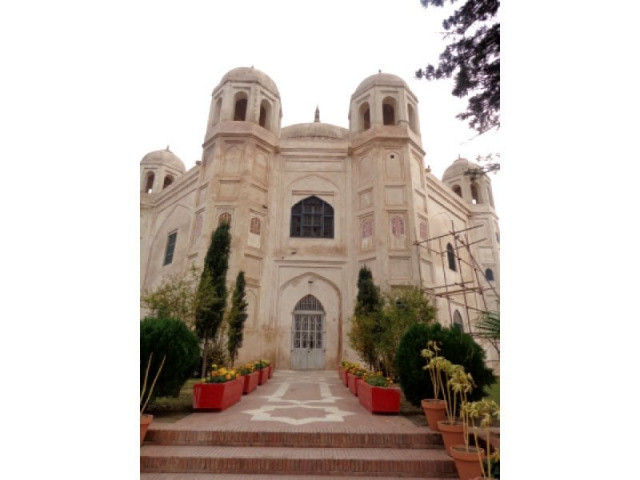
Work on the restoration of the Anarkali Tomb has been completed.
The Archaeology Department is also likely to finish work on two more monuments in 2013.
The Anarkali Tomb is the first monument on which restoration work has been completed since 2011. The tomb, built between 1605 and 1606, has been restored on orders of the chief secretary at a cost of Rs4.984 million.
During the repairs, the roof, windows and doors have been fixed while terracotta tiles and lattices (jails) have been replaced.
An Archaeology Department official speaking on condition of anonymity because he is not authorised to speak said three layers of lime had been applied and new tiles, bearing similar patterns and made of the same materials, were used to replace the old ones. The towers have been plastered with lime. The damaged floor tiles have been replaced. He said bricks were used for underpinning the structure.
New electric wires have been laid and the damaged lights have been retouched. The building has also been fixed for holes and an opening allowing rain water seepage has been sealed.
Photographs of the repairs have been taken and added to the department’s record of restoration projects.
Over the last couple of hundred years, the tomb has been put to several uses. In the first half of 19th century it served as the residence of Ranjit Singh’s French General Jean Baptiste Ventura’s Armenian wife.

From 1849, after takeover of Punjab by the British, it was used as offices for the clerical staff of the first British Resident, Henry Lawrence. In 1851 the offices of the Board of Administration were removed from the Tomb of Anarkali and placed it inside the eastern bay of the tomb. In 1851 the tomb was made into St James Church. In 1855, access was granted to the upper storey of the arches through an outer staircase to expand the sitting area of the church. In 1863 a clock was placed in one of the towers. It was removed after partition. In 1867 a wooden addition was made to the part of the galleries in St James Church. Some additionof the Sikh period and parts of wooden fittings, made during the British era, have survived.
In 1891 the Punjab government decided to use the Tomb of Anarkali as a General Record Office. In 1892 racks were provided for the office. In 1924, the government established a Historical Record Office here. It was later shifted. The archival museum established at the tomb still exists.
An official said minor repairs had been undertaken twice, in 1960s and in the 1970s.
Another Archaeology Department official said work on Ghazi Khan Tomb in Dera Ghazi Khan will also be completed by end of February. He said restoration of Sher Singh’s samaadhi, started about two years ago, will also be completed this year.
At Ghazi Khan’s Tomb, the roof, damaged by rainwater seepage, has been replaced. The damaged decorative tiles and parts of floor have also been repaired.
Published in The Express Tribune, January 11th, 2013.


















COMMENTS
Comments are moderated and generally will be posted if they are on-topic and not abusive.
For more information, please see our Comments FAQ